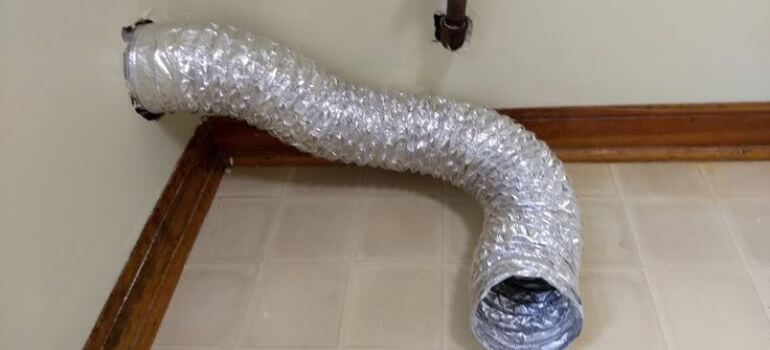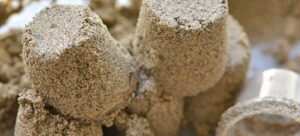In today’s fast-paced world, household chores often take a backseat to our busy schedules. However, one essential task that should never be neglected is maintaining your dryer vent hose. Neglecting this crucial component of your dryer can lead to various problems, including reduced efficiency, safety hazards, and even potential fire risks. In this comprehensive guide, we will discuss how often you should replace your dryer vent hose and why it’s essential for the well-being of your home and family.
Understanding the Dryer Vent Hose
What is a Dryer Vent Hose?
A dryer vent hose, also known as a dryer duct or exhaust hose, is the flexible tube that connects your dryer to the outside vent or wall. Its primary function is to expel hot, moist air and lint from your dryer to the outdoors, allowing your clothes to dry efficiently.
Importance of a Functional Dryer Vent Hose
A properly functioning dryer vent hose plays a crucial role in your home. Here’s why:
Prevents Lint Build-Up
The vent hose helps in removing lint, preventing it from accumulating inside your dryer. Lint build-up can lead to reduced airflow and increased drying times.
Ensures Energy Efficiency
A clean and unobstructed vent hose allows your dryer to operate efficiently, reducing energy consumption and ultimately saving you money on utility bills.
Prevents Fire Hazards
Lint build-up in the vent hose can pose a significant fire hazard. Replacing it regularly can mitigate this risk and keep your home safe.
How Often Should You Replace Your Dryer Vent Hose?
Now that we understand the importance of a dryer vent hose let’s delve into how often it should be replaced.
Check for Visible Damage
Inspect your dryer vent hose regularly for visible signs of wear and tear, such as cracks, holes, or deterioration. If you notice any damage, it’s time for a replacement.
Annual Inspection
Even if there are no visible issues, it’s a good practice to have an annual inspection of your dryer vent system. A professional can identify hidden problems and advise on when a replacement is necessary.
Age of the Hose
As a general rule of thumb, consider replacing your dryer vent hose every 3-5 years, even if it appears to be in good condition. Over time, the material may degrade, compromising its effectiveness.
Frequent Dryer Use
If you use your dryer frequently, you may need to replace the vent hose more often. Heavy usage can lead to faster wear and tear.
Environmental Factors
Homes in humid climates or areas with extreme temperature variations may require more frequent replacements due to the hose’s exposure to harsh conditions.
How to Replace Your Dryer Vent Hose

Replacing your dryer vent hose is a relatively simple process. Here are the steps to follow:
Gather Your Tools
You’ll need a new vent hose, screwdriver, clamps, and a utility knife.
Disconnect the Dryer
Turn off the dryer and unplug it from the electrical outlet. Disconnect the old vent hose from both the dryer and the wall or vent opening.
Remove the Old Hose
Use a screwdriver to loosen the clamps securing the old hose. Carefully remove the hose from both ends.
Install the New Hose
Attach the new vent hose to the dryer and the wall or vent opening, securing it with clamps. Ensure a tight fit to prevent air leaks.
Test the Dryer
Plug in the dryer, turn it on, and run a test cycle to ensure the hose is properly installed and there are no leaks.
Maintaining Your Dryer Vent Hose
Regular Cleaning
In addition to periodic replacement, cleaning your dryer vent hose is crucial. Lint can accumulate inside the hose, reducing airflow and increasing the risk of fire. Use a long brush or a vacuum cleaner with a hose attachment to remove lint and debris. It’s a good idea to do this every few months.
Check the Vent Opening
Inspect the vent opening on the exterior of your home. Ensure it is clear of obstructions, such as leaves, bird nests, or debris. A blocked vent opening can restrict airflow and cause your dryer to work less efficiently.
Monitor Dryer Performance
Pay attention to how your dryer is performing. If you notice that your clothes are taking longer to dry than usual or that your laundry room is getting unusually hot, these can be signs of a clogged or damaged vent hose.
Professional Maintenance
Consider scheduling professional maintenance for your dryer and vent system annually. An experienced technician can thoroughly clean the vent hose, check for any issues, and ensure optimal performance.
Tips for Prolonging Your Dryer’s Lifespan
Clean the Lint Filter Regularly
Empty the lint filter after every cycle to maintain proper airflow and prevent lint build-up in the vent hose. This simple step can significantly extend your dryer’s lifespan.
Avoid Overloading
Overloading your dryer can strain the motor and other components, leading to premature wear and tear. Follow the manufacturer’s guidelines for load capacity.
Use Proper Ventilation
Ensure your laundry room has adequate ventilation. Proper airflow helps dissipate heat and moisture, reducing strain on the dryer.
Keep the Area Around the Dryer Clear
Remove any items stored near the dryer, as they can obstruct airflow and potentially pose a fire hazard.
Regularly Inspect the Power Cord
Check the power cord and plug for any signs of damage or wear. Replace them if needed to prevent electrical issues.
Address Any Unusual Noises
If you notice unusual noises coming from your dryer, investigate the source promptly. Ignoring strange sounds can lead to more significant problems.
Conclusion
Maintaining your dryer vent hose is a crucial aspect of home safety and efficiency. Regular inspection and replacement as needed will help prevent lint build-up, reduce fire hazards, and ensure your dryer operates at its best. By following the guidelines mentioned in this article, you can keep your home and family safe while enjoying the benefits of a well-functioning dryer.
FAQs
While cleaning your vent hose is essential, it’s advisable to replace it if you notice any damage or deterioration. Cleaning alone may not be sufficient to ensure safety and efficiency.
Signs include longer drying times, excessive heat in the laundry area, and a burning smell when the dryer is in use.
It’s recommended to use a metal vent hose, as it is more durable and less likely to catch fire compared to plastic alternatives.
While it’s possible to replace the hose yourself, it’s safer to hire a professional, especially if you’re not experienced with appliance repairs.
Regularly clean the lint filter in your dryer and have your vent hose inspected and cleaned annually to prevent lint accumulation and maintain safety.



